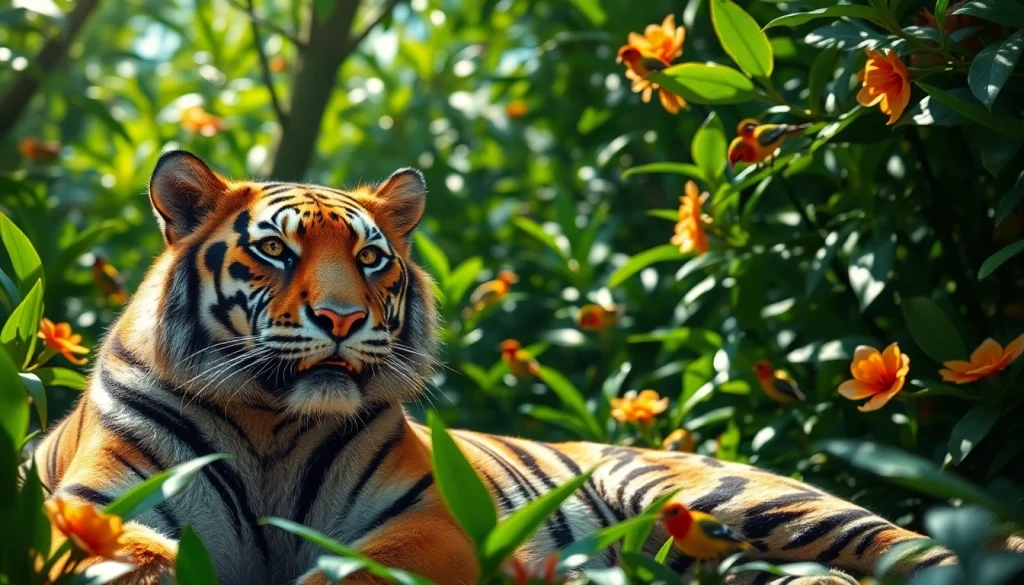Understanding Wildlife Conservation at www.sudswild.com
Wildlife conservation is an essential endeavor that aims to protect and preserve biodiversity across the globe. At www.sudswild.com, this mission is central to our purpose, promoting awareness and actionable efforts to ensure vibrant ecosystems for future generations. Wildlife conservation not only focuses on the animals and plants themselves, but also seeks to maintain the delicate balance of the ecosystems they inhabit. This article explores the critical aspects of wildlife conservation, from its significance to the roles individuals and communities play in these efforts.
The Importance of Wildlife Preservation
Wildlife preservation is vital for numerous reasons. First and foremost, biodiversity boosts ecosystem productivity, where each species, no matter how small, has a role to play. Healthy ecosystems are resilient, providing services essential for human survival such as clean air, water, and fertile soil. Moreover, wildlife holds intrinsic value. Many cultures draw meaning, inspiration, and pride from the diverse species that inhabit our world. Wildlife preservation also supports agriculture and medicinal resources, as many of our crops and medicines are derived from wild species. Lastly, the conservation of wildlife connects people to nature, fostering understanding and respect for the world we share.
How Conservation Benefits Ecosystems
Conservation efforts play a crucial role in safeguarding ecosystems. Biodiversity is crucial for maintaining ecological balance. The complex interactions among species create stable environments capable of withstanding disruptions. One significant benefit of conservation is the reduction of habitat loss. Programs aimed at habitat preservation allow native species to thrive, supporting wider ecological networks. Furthermore, restoration projects can recover damaged ecosystems, enhancing resilience against climate change and other environmental stressors. By conserving wildlife, we protect the ecological services upon which humanity relies.
Role of Local Communities in Conservation Efforts
Local communities are the backbone of successful conservation strategies. Engaging communities in the conservation process ensures that efforts are culturally sensitive and tailored to local needs. Local populations often possess invaluable knowledge about their environment and biodiversity. When adequately supported, these communities can become stewards of their landscapes, protecting wildlife while benefiting economically through eco-tourism and sustainable practices. Collaborations between conservation organizations and local communities have shown that shared responsibilities can lead to effective, lasting outcomes in wildlife preservation.
Exploring Wildlife Photography Techniques
Wildlife photography captures the raw beauty of nature, igniting a passion for conservation and appreciation for biodiversity. As we delve into the intricacies of this art, it is essential to equip ourselves with knowledge on the essential techniques and equipment aimed at maximizing the quality of our wildlife imagery.
Essential Equipment for Wildlife Photographers
Investing in the right equipment is invaluable for aspiring wildlife photographers. A high-quality camera with fast autofocus capabilities is crucial. Premium lenses, particularly long telephoto lenses ranging from 200mm to 600mm, will allow you to capture distant subjects without disturbing them. Tripods and monopods also provide stability, a necessity for shooting at slower shutter speeds or in low-light settings. Additional tools such as external flashes and remote triggers can enhance your shooting flexibility. Lastly, protective gear for the camera ensures that equipment stays safe from unpredictable weather conditions encountered in the field.
Best Practices for Capturing Animals in Their Habitats
Capturing animals in their natural habitats requires patience, respect, and strategy. Understanding animal behavior is vital; researching when and where specific species are most active can significantly improve your chances of a successful shot. Additionally, mastering techniques such as composition, lighting, and depth of field will allow you to create visually compelling images. Employing a quiet approach is also crucial; minimizing your noise and movement not only increases your chances of encountering wildlife but also ensures you do not disrupt their natural behaviors. Finally, preserving our subjects’ welfare should always be a priority—never intrude on nesting sites or stress wildlife for the sake of a photograph.
How to Edit Wildlife Images for Maximum Impact
Post-processing is a significant part of wildlife photography that should not be overlooked. Software like Adobe Lightroom and Photoshop can enhance your images dramatically. Start by adjusting exposure, contrast, and white balance to create a balanced image. Cropping can help eliminate distractions and improve composition. Employ techniques like sharpening and noise reduction to enhance clarity and details. However, strive for authenticity; avoid over-editing, which can misrepresent the creature or habitat. Ultimately, effective editing highlights your subject’s essence and helps convey the story behind your photograph.
Species You Can See on www.sudswild.com
At the heart of wildlife conservation is the understanding and appreciation of various animal species. This section showcases remarkable wildlife that can be observed at www.sudswild.com, emphasizing their status, adaptations, and the efforts to protect them.
Highlighting Iconic Wildlife: Tigers, Elephants, and More
Tigers and elephants symbolize the majesty of the animal kingdom. Tigers, known for their striking coats and powerful presence, are critical apex predators that regulate prey populations and maintain ecosystem balance. Tragically, habitat loss, poaching, and climate change have threatened their existence, leading to significant conservation efforts aimed at protecting their habitats and addressing illegal wildlife trade.
Elephants, often referred to as the gardeners of the forest, play a pivotal role in their ecosystems. Their immense size and dietary habits shape their habitats, creating gaps that allow smaller plants to flourish. Conservation programs for elephants focus on mitigating human-elephant conflict, ensuring these magnificent creatures can coexist with local communities. Initiatives also emphasize anti-poaching drives and habitat preservation schemes, reaffirming the crucial role these species play in the natural world.
Endangered Species and Their Recovery Stories
Countless species find themselves on the brink of extinction, prompting immediate conservation efforts. One success story is that of the American bison. Once nearing extinction due to overhunting and habitat destruction, extensive management and conservation programs led to a remarkable resurgence. Protected areas and sustainable land management practices have allowed populations to thrive, showcasing the potential of recovery strategies. Similarly, the California condor has seen its numbers increase due to captive breeding and reintroduction efforts, illustrating the impact of dedicated wildlife conservation work.
Unique Adaptations of Various Animal Species
Many species possess unique adaptations that allow them to survive in specific environments. For instance, the Arctic fox features a thick winter coat that provides insulation against extreme cold, alongside a layered body structure that reduces heat loss. Camouflage is another fascinating adaptation; the chameleon’s ability to change skin color helps it avoid predators and communicate with others. Understanding these adaptations is valuable not only for appreciating wildlife but also for driving conservation efforts aimed at protecting these species and their habitats from anthropogenic changes.
Getting Involved: How You Can Make a Difference
Each of us has the power to contribute to wildlife conservation, and getting involved can take various forms. This section explores opportunities ranging from volunteering to advocacy, encouraging readers to discover how they can make a difference.
Volunteer Opportunities in Wildlife Conservation
Volunteering is a fulfilling way to engage with wildlife conservation while gaining hands-on experience. Organizations often seek volunteers for various roles, from field research and data collection to education and outreach programs. Rolling up your sleeves and actively participating can foster a deeper understanding of wildlife issues and heighten your commitment to conservation. Many projects also provide opportunities for community engagement, highlighting the importance of collective efforts in protecting natural resources.
Supporting Local Wildlife Sanctuaries
Local wildlife sanctuaries and rehabilitation centers serve as vital havens for injured, orphaned, or displaced animals. Supporting these organizations through donations, community efforts, or even visiting can significantly aid in their operations. Many sanctuaries welcome public involvement, offering educational programs that promote awareness and appreciation for local wildlife. By backing these initiatives, you contribute to the rehabilitation and care of animals while fostering connections within your community.
Advocacy and Awareness Campaigns
Advocacy is paramount for wildlife conservation, as it brings attention to pressing issues and influences policy change. Engage in campaigns focused on legislative actions that promote wildlife protection. This can involve signing petitions, contacting your representatives, or participating in community events aimed at raising awareness. Social media also offers platforms for promoting messaging and connecting with like-minded individuals. Informed advocacy can help build momentum and create systemic changes that lead to better protection for vulnerable species and their habitats.
Measuring the Impact of Wildlife Conservation Initiatives
To understand the effectiveness of conservation initiatives, it’s crucial to measure their impact. Evaluating projects accurately allows conservationists to replicate successful strategies, adapt to ongoing challenges, and communicate successes to stakeholders.
Key Metrics for Evaluating Conservation Success
Several key metrics can indicate the success of wildlife conservation initiatives. Population trends of target species are among the most direct measurements; increases in animal populations can signify effective management. Habitat quality assessments reveal the extent of restoration and preservation efforts. Additionally, engaging community participation levels and the economic benefits derived from conservation projects can provide insight into the social dimensions of success. Together, these metrics create a holistic view of conservation effectiveness.
Case Studies of Successful Conservation Projects
One notable case study is the recovery of the gray wolf in Yellowstone National Park. After being eradicated from the area for decades, wolves were reintroduced in 1995. Their presence dramatically reshaped the ecosystem, leading to the resurgence of vegetation and benefiting numerous other species. Another example can be seen in the success of the Great Green Macaw conservation efforts in Central America, where habitat restoration led to a notable increase in their numbers. Such case studies not only document success but also serve as models for future initiatives.
The Future of Wildlife Conservation at www.sudswild.com
The future of wildlife conservation hinges on collaborative efforts, informed by data and community engagement. At www.sudswild.com, we strive to continue promoting awareness and active involvement in conservation initiatives. As challenges such as climate change and habitat destruction grow, adapting strategies that incorporate scientific research, local knowledge, and innovative technologies will be crucial. With sustained dedication and proactive measures, we can forge a future where wildlife thrives alongside humanity.





